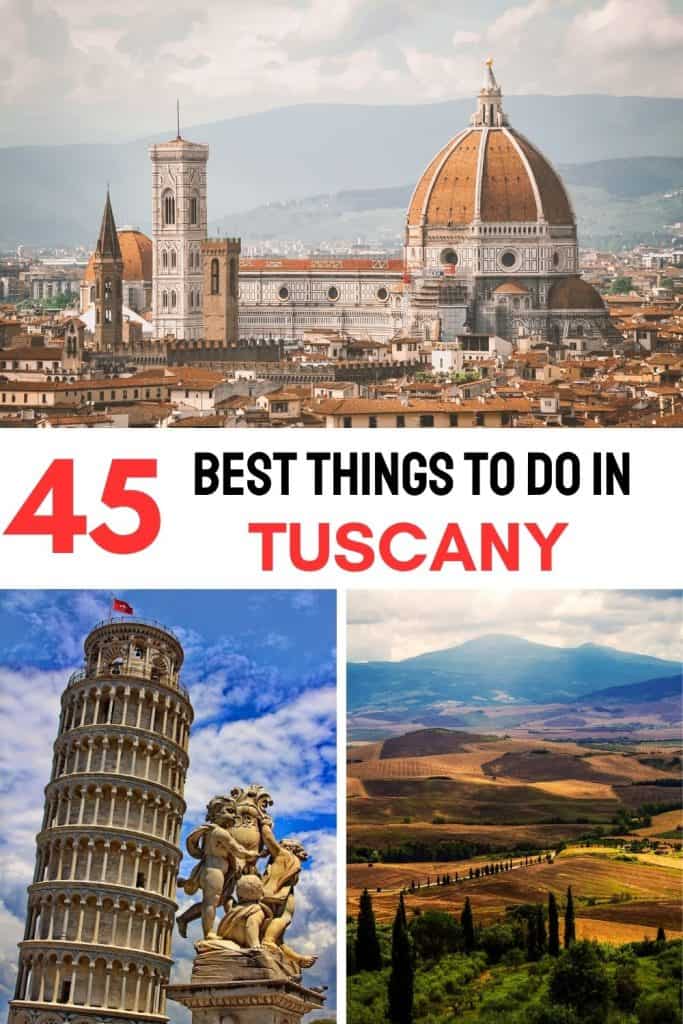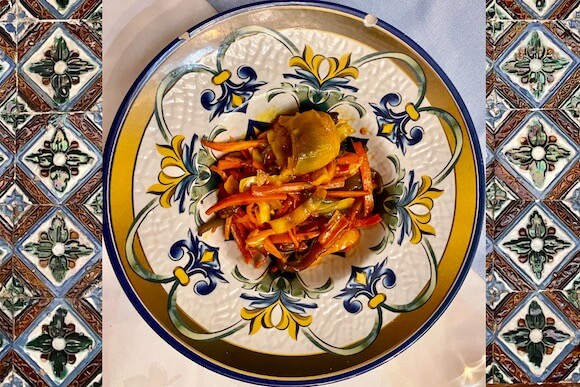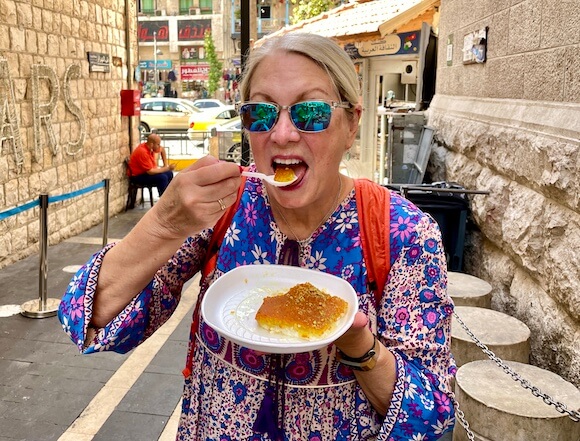The island of Sicily evokes a wide variety of intriguing images. Many visitors choose to skip the capitol because of its gritty reputation and storied past. After experiencing some of the best things to do in Palermo, I think...
The island of Sicily evokes a wide variety of intriguing images. Many visitors choose to skip the capitol because of its gritty reputation and storied past. After experiencing some of the best things to do in Palermo, I think you�ll agree that this vibrant destination, although somewhat rough around the edges, is full of authentic places to visit.
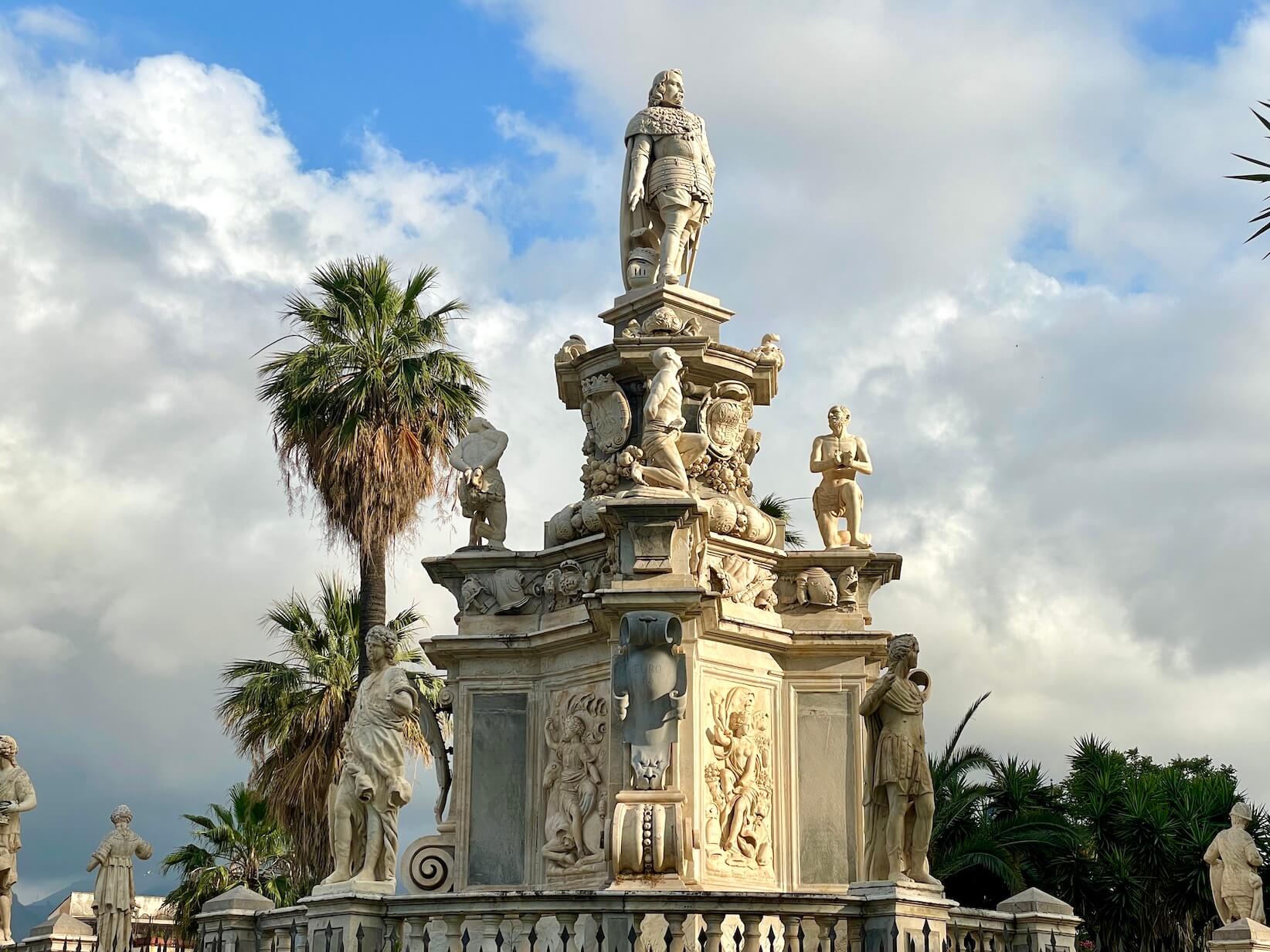
Whether you are spending a quick 24 hours in Palermo or have planned a longer stay, this guide for Palermo sightseeing will help you plan your trip to the Crossroads of the Mediterranean.
Brief Overview
Sicily, the largest island in the Mediterranean Sea is a fascinating confluence of cultures.
Layers of history bury ancient secrets awaiting discovery. �The capital of Palermo is a place that weaves together the captivating narratives of a forgotten era. Visitors will find the remnants of awe-inspiring architecture and the hidden gems of a city rich in cultural heritage. The most conquered city in history, it would take a lifetime to discover all she has to offer.
History of Palermo At a Glance
The city of Palermo is much more welcoming and colorful that the �gritty� reputation everyone is quick to talk about. Could parts of it use a facelift? Sure, but below the surface is a destination just waiting to say hello and be discovered. The architecture boasts a large number of Unesco sites and over 230 ancient churches.
Many of the structures of the city bear witness to different rulers. Unique design combines Muslim,�Byzantine,�Latin,�Jewish, Lombard, and�French influence.
Palermo�s cultural heritage however, �is not limited to its architectural marvels. It extends into its vibrant festivals, traditional cuisine, and dynamic street markets.
Palermo can be experienced through its UNESCO World Heritage Sites, such as the Palazzo dei Normanni and the Cathedral of Palermo. These architectural wonders showcase the intricate craftsmanship and artistic prowess of their creators, transporting us back in time. Gazing at the intricate mosaics, intricate stonework, and opulent decorations, we gain a glimpse into the grandeur and opulence that once defined Palermo�s rulers.
Each celebration, each dish, and each interaction is infused with the the stories of generations. Whether it�s the exuberant processions of the Feast of Santa Rosalia or the tantalizing flavors of arancini and cannoli, Palermo�s cultural heritage is alive and thriving.
Is Palermo Safe for Female Travelers?
From my experience traveling with my daughter, Palermo, like many cities, can be considered generally safe. It is essential to exercise common-sense precautions, especially for solo female travelers. Keep in mind that conditions can change, so it�s advisable to check for the latest travel advisories and reviews from reliable sources before planning your trip.

Safety Tips for Female Travelers
Research: Familiarize yourself with the local culture, customs, and any potential safety concerns specific to Palermo. Accommodations: Choose accommodations in safe and well-reviewed areas. Read reviews from other solo female travelers to get a sense of their experiences. Local Customs: Be aware of and respect local customs and dress codes to avoid drawing unnecessary attention. Public Transportation: Use reliable transportation options and be cautious when traveling late at night. Plan your routes in advance and avoid poorly lit or deserted areas.
It�s always a good idea to consult up-to-date travel advisories and forums for the latest information on safety in Palermo as well as other destinations. Additionally, reaching out to other travelers or locals for advice can provide valuable insights for a safe and enjoyable solo trip. For US travelers, I make a habit of registering with the US State Dept. before leaving on an international trip.
Area and Geography

Flying into the airport, I was surprised to see the mountains so closely nestled to the sparkling Mediterranean. The geographical location of Palermo played a pivotal role in shaping its ancient history. The port, an essential part of the city�s narrative, offered a natural shelter to seafarers, providing refuge from treacherous storms and the unpredictability of the open waters.
This symbiotic embrace of land and sea granted Palermo a unique advantage, enabling its port to thrive as a hub of trade and a melting pot of cultures.
Weather patterns, a constant presence in Palermo�s past, have acted as both ally and adversary, leaving an indelible mark on the development and destiny of its bustling harbor. From the warm Mediterranean breezes that invited vessels from distant lands to the tempestuous storms that occasionally roared ashore, the elements have shaped the city�s maritime fortunes. Palermo�s geography, with its strategic position on the coast, ensured that it would forever be influenced by the ebb and flow of the natural world.
Weather
The weather in Palermo is characterized by long, hot summers and mild winters. From June to September, the city basks (bakes) in glorious sunshine with average temperatures reaching a balmy 86 degrees Fahrenheit (30 Celsius). Often it is much hotter. The perfect time to explore the city�s outdoor treasures is the morning, taking a siesta during the hottest part of the day. Venture out again in the evening to the bustling streets that come alive with vibrant energy and delicious aromas.

In contrast, the winter months, from December to February, bring cooler temperatures averaging around 55 degrees Fahrenheit. The streets may be quieter, but Palermo�s charm remains intact, with its historical buildings adorned by a gentle winter light. It�s a season that invites introspection and the opportunity to experience the city in a more intimate setting.
Palermo�s location by the sea not only shapes its climate but also introduces an element of unpredictability. The sea breeze brings occasional gusts that provide a refreshing break from the summer heat. However, it�s worth noting that autumn and spring can be more changeable, with sporadic rain showers. As with most islands in the world, weather can blow in and out at a moments notice.
After visiting in early July and enduring the heat, I�d recommend coming to Sicily in the shoulder season of late September. The water will still be warm and sun kissed, many of the crowds will have dissipated. Prices will be lower at most of the hotels.
Population
Palermo is the 6th most populated city in Italy and the most populated city south of Naples. Sicily�s capital has an estimated 650,000 residents.
�Airports and Getting to Palermo
Yes, Palermo has an international airport called Falcone-Borsellino Airport (IATA: PMO). It is located about 35 kilometers (22 miles) west of Palermo�s city center. Falcone-Borsellino Airport is the main airport serving the city and the surrounding region in Sicily. It has both domestic and international flights, connecting Palermo to various destinations in Europe and beyond.
When planning your trip, you can check for flights directly to Falcone-Borsellino Airport or explore other nearby airports depending on your travel preferences and itinerary. There are also ferries coming from the mainland. Keep in mind that transportation options from the airport to the city center are readily available, including taxis, shuttle services, and rental cars.
Currency
Sicily, as does the rest of Italy, uses the Euro. The official abbreviation is EUR. ATM machines are found all over the city but be sure to know your PIN before you leave home. Sicily requires a 4 digit pin code. �Oddly, many of the banks we tried did not exchange currency and we ended up changing money at the post office.
Palermo�s Best Things to Do
Street Markets
Palermo is renowned for its vibrant and lively markets, each offering a unique ambiance and a wide array of products. The atmosphere is infectious with vendors shouting, singing, and offering up samples. Truly a feast for the senses.
Visitors will find each market �a bit different with it�s own personality.
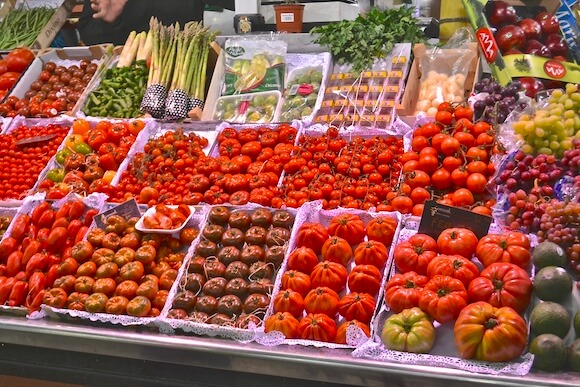
The most famous are: Capo, Ballar�, Vucciria, Borgo Vecchio
Ballar� MarketLocation: Situated in the Albergheria district.
Atmosphere: Ballar� is one of Palermo�s oldest and most colorful markets. It�s a bustling and chaotic place, characterized by narrow alleys and vibrant street life.
Products:The market is known for its fresh produce, seafood, meats, cheeses, and a variety of Sicilian street food. Vendors shout out their prices and engage in lively banter with customers.
Vucciria MarketLocation: Found in the historic center of Palermo.
Atmosphere: Vucciria has a lively and bohemian atmosphere, especially in the evenings. During the day, it�s a busy market, and at night, it transforms into a social hub with bars and restaurants. The nightlife in the area is very popular.
Products: Vucciria offers a mix of fresh produce, local specialties, and artisanal crafts. It�s a great place to experience the local food scene and enjoy a vibrant nightlife.

Indulging in street food is one of the best things to do in Palermo!
Location: Located near the Quattro Canti in the historic center close to Palermo Cathedral.
Atmosphere: Capo is a vibrant and bustling market with a mix of traditional and modern elements. It�s surrounded by historic buildings and has an animated, authentic feel. It�s a maze of narrow streets and bustling stalls.
Products: This market is known for its fresh fruits, vegetables, meats, and seafood. You�ll also find a variety of spices, herbs, and local specialties. The market is a great place to sample Sicilian street food and sweets, the perfect place to take a casual stroll through the vendor�s stalls.
Borgo Vecchio MarketLocation: Situated near the port area (outside the city walls)
Atmosphere: Borgo Vecchio has a more contemporary and open-air market atmosphere. It is a popular destination for both locals and tourists.
Products: The market offers a mix of fresh produce, seafood, clothing, and other goods. It�s a great place to shop for souvenirs and enjoy a casual stroll through the stalls.
Each of these markets provides a unique experience, reflecting the diverse nature of Palermo�s culinary and cultural scene. Exploring these markets is not only a feast for the senses but also an immersion into the local way of life.
Palermo Cathedral (Cattedrale di Palermo)

A visit to the city is not complete without seeing this iconic UNESCO recognized cathedral. A masterpiece of Norman architecture it is known for its impressive blend of different design styles. Don�t miss the beautiful mosaics inside as well as the Royal Tombs.
In 1885,�Walter Ophamil, an Anglo_Norman archbishop minister of King William II designed and built the main church. When the Sarcens conquered the city, the church became a Muslim mosque. Each conqueror has left his mark on the architecture.
I always like to find a place of impressive height when in a new destination. The views from the rooftop are just that (acrophobics beware). After the climb, there is a narrow catwalk that rewards the adventurous with lovely panoramas of the square, and city beyond.
Explore the Norman Palace �
The Norman Palace is one of the oldest royal residences in Europe and has served various rulers over the centuries. It houses the stunning Cappella Palatina, a chapel known for its exquisite mosaics, as well as the Palazzo Reale, which contains a mix of architectural styles.This historic palace is a UNESCO World Heritage Site adorned with intricate mosaics depicting biblical scenes. Design buffs will have a field day looking at the magnificent ceiling. The imagines are combined in a stunning array of color combinations. Perhaps I�d admit, one of the most beautiful I�ve had the privilege to visit.
Palatine Chapel (Palazzo dei Normanni)
The Palatine Chapel is the royal chapel of the Norman Palace in Palermo. This building is a mixture of Byzantine, Norman and Fatimid (909-1167 AD) architectural styles, showing the tricultural state of Sicily during the 12th century after Roger I and Robert Guiscard conquered the island.
This sacred space, adorned with intricate mosaics and richly carved ceilings, reminds the visitor of a time when religious devotion was infused into every aspect of life. Its walls echo with the whispered prayers of countless generations. Interior beauty serves as a testament to the craftsmanship and vision of the past.
Tasting Palermo
Palermo�s ancient history is not limited to grand processions, religious events and churches. It also tantalizes our taste buds with its traditional cuisine. One cannot fully appreciate the culinary delights of Palermo without understanding the historical influences that have shaped its gastronomy.

A bite into an arancini, a fried rice ball filled with rag� or cheese, transports us to the Arab origins of Sicilian cuisine. Similarly, the decadent cannoli, with its sweet ricotta filling, speaks of the city�s past under Norman rule. Each dish is a delicious time capsule, carrying the flavors and aromas of centuries gone by.
Indulge in Sicilian Cuisine
Visit a local trattoria to experience the authentic flavors of Sicily. Better yet, take a food tour and really scratch beneath the surface of an extraordinary combination of cultures and flavors.
Take a Streaty Food Tour
One of the best opportunities to indulge in the culinary offerings is to take a food tour.
When friends learn you�re about to travel to Sicily, their first comment is almost always about food, especially Palermo�s street food. I love connecting with a culture through traditional dishes and flavors. Booking a local food tour is one of my favorite ways to dive right in. Street food tours are a great way to demystify the offerings in a foreign city. Streaty Tours, a company whose �mission is to support small family-run businesses and save Italian street food traditions,� warns guests �to �Come HUNGRY!� They did not disappoint, and filled us to the brim.

Taking a Streaty Food Tour was one of the activities we enjoyed the most!
Our small group rendezvoused with tour leader Federica on Via Principe di Belmonte. After a brief background and exchange of pleasantries, we were on our way. First stop was thru a hidden archway for a taste of panzerotti. This traditional fried puff pastry is stuffed with ham and cheese, or in my case vegetarian. That delicious bite set the tone for what was ahead for the next four, yes four, hours.
Into Old Palermo, down a small alley to a teensy wine shop/restaurant. Hole in the Wall comes to mind in the very best of ways. The tuna lover in me had been looking forward to trying bottarga di tonno, AKA Poor Man�s Caviar. Salty, with a delicate taste, the roe paired brilliantly with the local and natural white wine selection.
I don�t want to give away all of Streaty�s secrets, but we covered a lot of ground. A stop at a �hard to get reservations� spot for caponata, swordfish and a squash dish that was divine. Small production, natural wines, cheese-making and pasta were all part of the additional mix. Fresh ingredients, copious amounts of mint and additional herbs all representing the mix of cultures and dishes that have become synonymous with Sicilian cooking.

When we entered a pasteria, my stomach breathed a sigh of relief, for my daughter and I both knew the end was near. A final choice of pastry or gelato, a few laughs and discussion of our favorite tastes of the day.
Booking the Classic Sicilian Food and Wine Tour allowed us the opportunity to eat like Palermitanis, discover cuisine in places we would have never have found on our own and learn a bit of history and local lore in the process. A food tour with Streaty is a delightful way to take a bite of Sicily while connecting with a personable and knowledgeable guide as well as other foodies from all around the world.
Have a Drink on a Rooftop
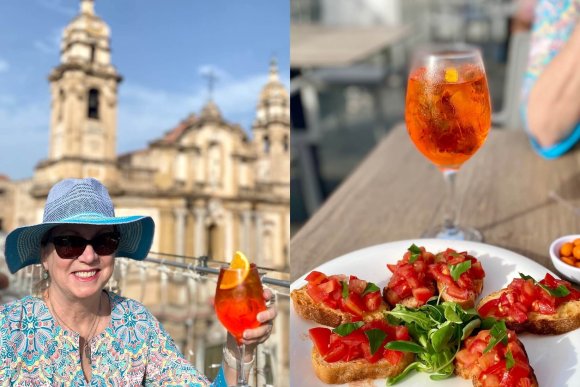
All this sightseeing will no doubt leave you parched and in need of a rest. One of our favorite lookout points in Palermo was the rooftop of La Renascent Department store. I will admit to visiting more then once, as it was a short walk from our AirBnB. Looking out over Piazza San Domenico, we relaxed with small plates and an aperitif and felt a little slice of heaven.
Relax in the Botanical Gardens (Orto Botanico)
Escape the bustling city and spend some time in the peaceful Botanical Gardens.
Nestled in the outskirts of Palermo, the Orto Botanico, or Botanical Garden, beckons visitors with its serene beauty and captivating plantings. This is not a precise and orderly green space, but�a lush oasis. The serene environment calls for a leisurely stroll. Visitors are surrounded in a world of vibrant colors, water features and a fascinating array of plant species from around the globe.

Established in 1779, the Orto Botanico holds the distinction of being one of the oldest botanical gardens in Europe. Its founders envisioned a place where both scientists and nature enthusiasts could come together to study, appreciate, and preserve the vast biodiversity of our planet. Over the centuries, the garden has lived up to this mission, showcasing an astonishing collection of over 12,000 plant species.
Take a walking tour along the winding paths. Guests will enjoy the vast green space,�each section bursting with its own unique charm. From the fragrant rose garden to the tranquil Mediterranean section, the Orto Botanico offers a sensory feast for the eyes and nose. Towering palm trees and bamboo sway gently in the breeze. This is not simply a garden, but a living testament to the enduring beauty and power of nature.

�
Beyond its breathtaking beauty, the Orto Botanico also serves as an educational hub, hosting a range of workshops, lectures, and exhibitions throughout the year. Visitors can take guided tours that dive deeper into the fascinating history and ecological significance of various plant species. The garden�s dedicated team of botanists and horticulturists eagerly share their wealth of knowledge, illuminating the interconnectedness of all living things and fostering a deeper understanding of our natural world.
In addition to the green space, the library houses an astonishing number of specimens. The cabinets of curiosities will inspire wonder! The chic caf� offers a small menu and a relaxing spot to chill. Make sure not to miss the rotating art exhibit behind the ticket entry. Prepare to swoon over the interior wallpaper.
Visit the Quattro Canti
�Also known as Piazza Vigliena, this square is a Baroque masterpiece. It�s a crossroads of two important avenues. Adorned with statues and fountains, the four corners represents the four seasons, the four Spanish kings of Sicily, and the four patron saints of Palermo.
The location is a favorite of wedding parties, and you just might catch a bride and groom in a photo session. It is also a great meeting spot if you want to rendezvous with friends.
Teatro Massimo
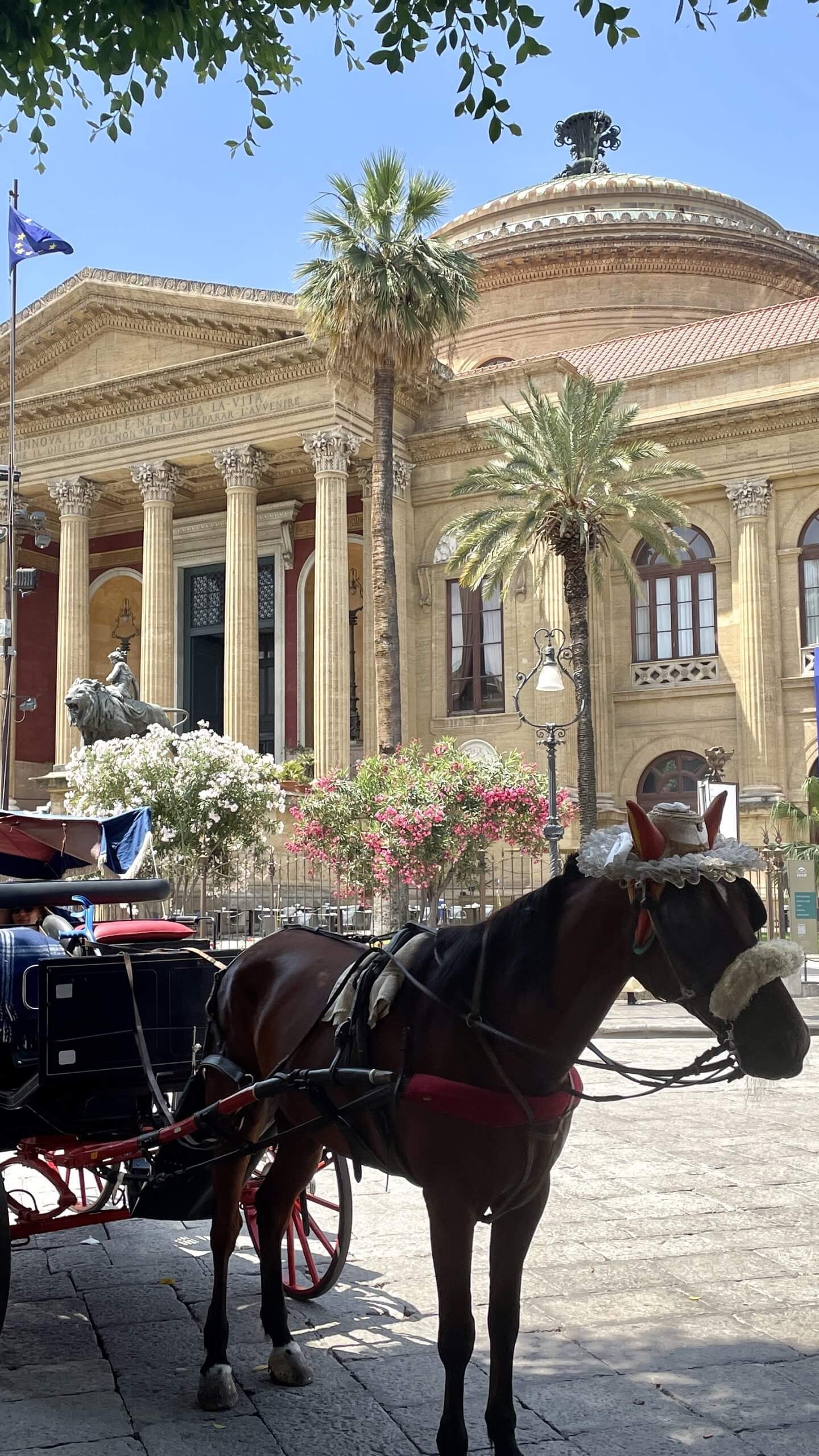
The majesty of Teatro Massimo opens a world of art and performance. This theater is one of the largest opera houses in Europe and can seat over 1,300 guests. Not only is it known for its size, but it is also for its iconic appearance in the classic film, The Godfather.
Built in 1897 and located in Piazza Verdi, tourists are immediately struck by its imposing presence. The majestic facade, adorned with intricate carvings and ornamented statues, hints at the grandeur that awaits inside.
To see the interior of Teatro, visitors must book a tour. This grand opera house, with its opulent architecture and rich history, stands as a testament to Palermo�s cultural legacy. The tour is money well spent as you step through the grand entrance and pass into a bygone era of elegance and glamour.

The ornate foyer has a sweeping staircases and crystal chandeliers. The walls are decorated with frescoes depicting scenes from Greek mythology, while the ceilings are embellished with intricate murals that come alive under the soft glow of the lights.
Our knowledgeable guide led us through the theater�s various rooms. We explored the lavish Royal Box, where notable figures and aristocrats once watched performances in exclusive comfort. The richly decorated auditorium is filled with plush red velvet seats and golden accents. �Just when you thought this iconic theater could not get more impressive your eyes are drawn to the symbolic wheel above. The mechanical roof, made up of eleven flower-like, frescoed petals, opens to provide the audience with ventilation in the heat of summer.
After the visit to the royal box, we headed down the hall to test the acoustics. It was fun to whisper conversations and hear them magically echo throughout the chambers.
The Teatro Massimo has served as a cultural hub for over a century, attracting both locals and visitors to experience the magic of live performances. It stands as a testament to Palermo�s commitment to preserving and celebrating its rich artistic heritage.
Be sure to check their web site for the current performance schedule.
Admire the Martorana Church (Chiesa di Santa Maria dell�Ammiraglio)
Exploring Palermo�s ancient history must come with an acknowledgement of the city�s tumultuous past. From invasions to revolutions, Palermo has endured its fair share of turbulence. Yet, through it all, the spirit of the city has remained resilient, leaving behind a legacy that continues to shape its present-day identity.
Another of my favorites in Palermo, this church is renowned for its stunning Byzantine mosaics. Built in the 12th century, the interior is a true gem, showcasing a blend of Norman, Arabic, and Byzantine influences.
Explore the Capuchin Catacombs (Catacombe dei Cappuccini)
�A unique and somewhat macabre experience, these catacombs house thousands of mummies in varying states of preservation. It provides a fascinating glimpse into Palermo�s past burial traditions.
Take a Stroll in the Historic District of La Kalsa
Palermo�s Kalsa district is one of those areas that lends itself to Palermo�s rough around the edges reputation. This ungentrified gem is built upon more medieval history than you would find in entire Old World cities.
Constructed beginning in the ninth century, it was one of the first planned�Arab localities to be established in Europe. This was the administrative centre of the city of Palermo conquered by the Normans during a battle early in 1072.
This vibrant neighborhood is filled with narrow streets, historic buildings, and charming squares. It�s a great place to soak in the local atmosphere, discover hidden nooks, and try some authentic Sicilian street food.
Church of San Cataldo
The Church of San Cataldo is a remarkable historical and architectural landmark located in the heart of Palermo, the capital city of Sicily, Italy. This church is renowned for its distinctive and unique Arab-Norman architectural style, a fusion of Arab and Norman influences that is characteristic of many structures in Sicily.
The Church of San Cataldo was constructed in the 12th century, during the Norman rule of Sicily. The architectural style reflects the multicultural influences of the time, combining elements of Arab, Norman, and Byzantine design. Recognized as a �UNESCO World Heritage Site that includes several other buildings in Palermo with Arab-Norman architectural elements,underscores the cultural and historical significance of these structures.
The church is characterized by its simple yet elegant exterior. The most prominent features are the red domes, which are indicative of Arab architectural influence. The three domes, each topped with a small cross, are a distinctive element of the church�s skyline.
The interior of the church is relatively small but features a unique blend of architectural elements. The three-aisled interior has a cross-shaped floor plan, and each aisle is separated by pointed arches, reflecting a mix of Norman and Arab design.
Intricate mosaics adorn the interior, particularly in the apse. The mosaics depict scenes from the life of Christ, and they showcase the Byzantine artistic influence prevalent in the region during that period.
Visitors to Palermo often appreciate the Church of San Cataldo not only for its architectural uniqueness but also for its historical importance in representing the cultural exchange and coexistence of different civilizations in Sicily during the medieval period.
San Giovanni degli Eremiti�(St John of the Hermits)
Another church featuring the iconic red domes is San Giovanni degli Eremiti. The structure is an ancient former monastic�church�located on Via Benedettini #19 in the ancient quarter of�Albergaria�of the city of��Palermo, region of�Sicily, Italy. It is about two blocks south from the�Palazzo dei Normanni, adjacent to the church of�San Giorgio in Kemonia. While the interior is virtually devoid of decoration or furnishings, the red Norman-Byzantine domes, the medieval cloister ruins, and garden make this small church a symbol of ancient Palermo.
Visit a Palazzo
In addition for Palazzo del Norman, Palermo is home to several magnificent palazzos, each with its own unique history, architecture, and cultural significance. Here are some of the other beautiful palazzos that you might consider visiting:
Palazzo Abatellis
Also known as the Abatellis Palace or Regional Gallery of Sicily, this Gothic-Catalan style palace now serves as an art gallery. It houses an impressive collection of Sicilian art from the Middle Ages to the 18th century, including works by famous artists like Antonello da Messina.
Palazzo Chiaramonte Steri
This medieval palace has a rich history and is known for its distinctive blend of Gothic-Catalan and Arab-Norman architectural styles. It served as a residence for various noble families and later as a prison. Guided tours offer insight into its historical significance.
Palazzo Ajutamicristo
Built in the 14th century, this palace has a mix of Gothic and Catalan influences. It features beautiful courtyards, gardens, and elegant halls. The palace is now open to the public and hosts various cultural events.
When visiting these palazzos, keep in mind that some might require advance booking or have limited opening hours, so it�s a good idea to check ahead. Exploring these historical gems provides a fascinating journey through the cultural and architectural history of Palermo.
Piazzas of Palermo
One of the most beautiful and iconic squares in Palermo is the Piazza Pretoria, also known as the �Square of Shame� or �Piazza della Vergogna� due to the nudity of the statues in the square
Piazza Pretoria is located in the heart of the historic center of Palermo, near the Quattro Canti intersection. The square is surrounded by impressive buildings and is dominated by the stunning Fontana Pretoria, a monumental fountain that is a masterpiece of Renaissance art.
The Fontana Pretoria was created in Florence by Francesco Camilliani in the 16th century and was originally intended for a private villa in Tuscany. However, it was eventually purchased by the city of Palermo and installed in Piazza Pretoria in 1574. The fountain consists of a series of concentric basins adorned with intricately carved statues of mythological figures, animals, and nude figures. The statues caused a scandal at the time of their installation, leading to the site�s nickname �Square of Shame.�
Despite the controversy, the Fontana Pretoria is a remarkable example of Mannerist sculpture and is considered one of the most beautiful fountains in Italy. The surrounding buildings, including the Palazzo Pretorio and the Church of Santa Caterina, add to the architectural charm of Piazza Pretoria.
Visitors to Piazza Pretoria can admire the fountain, stroll around the square, and take in the architectural beauty of the surrounding buildings. The square is also a popular gathering place for locals and tourists alike, making it a lively and vibrant hub in the heart of Palermo�s historic center.
Chiesa del Ges�

The �Chiesa del Ges�� refers to several churches in Italy dedicated to the Holy Name of Jesus and is often associated with the Society of Jesus (Jesuits), a Catholic religious order. One notable church with this name is located in Palermo, Sicily.
Chiesa del Ges� in Palermo is situated in the historic city center, not far from other significant landmarks. The construction of the church began in the late 16th century and was completed in the early 17th century.The Jesuits were involved in the construction, reflecting their influence and the Counter-Reformation emphasis on promoting Catholicism.
The church features Baroque architecture, with elaborate decorations and ornate details typical of the period.The facade is often a striking aspect, adorned with sculptures and decorative elements.
Like many Baroque churches, the interior is richly decorated with frescoes, stucco work, and gilded details.
Visitors are welcome to explore the church, although it�s advisable to check opening hours and any specific visitor guidelines.
Puppet Theater in Palermo
It is within the city�s storied stages that Palermo�s vibrant traditions and artistic expressions truly come to life, particularly in the world of Puppet Theater. This captivating art form has a long history in the city, with roots dating back to the 18th century. Palermo�s Puppet Theater, also known as Opera dei Pupi Siciliani, showcases the skilled craftsmanship and rich storytelling that have been passed down through generations. UNESCO has established the marionette theater as a �masterpiece of the oral and intangible heritage of all humanity.�
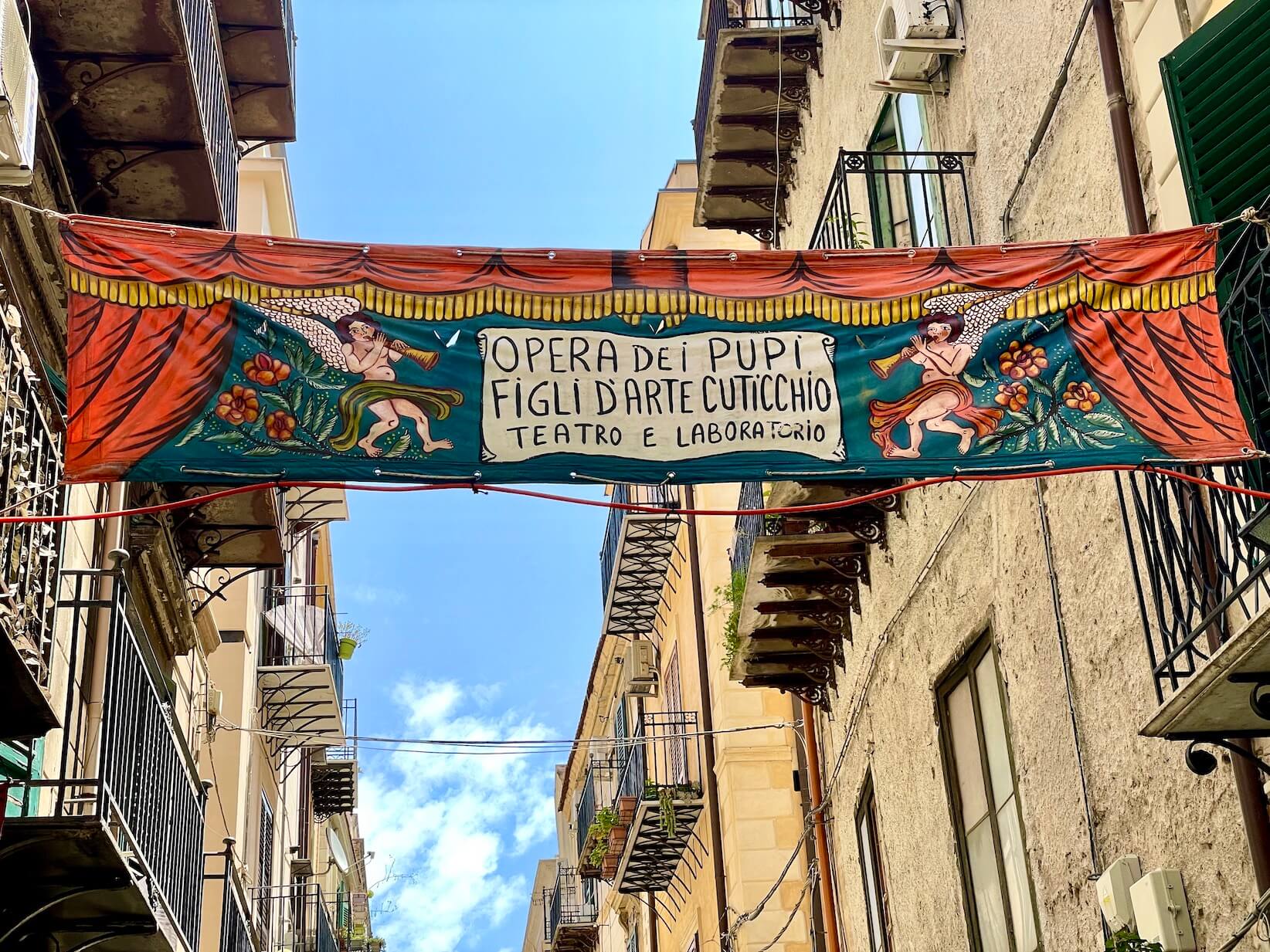
The Puppet Theater is a unique blend of entertainment and cultural heritage, offering a window into Palermo�s past and present. The elaborate puppets, or pupi, are meticulously handcrafted. Each one is a work of art in its own right. From their intricately designed costumes to their lifelike movements, these puppets captivate audiences with their attention to detail.
Puppet Theater in Palermo is not solely about visual spectacle. It is also a medium through which timeless stories and legends are brought to life. These tales often draw from Sicilian folklore and mythology, transporting spectators to a bygone era filled with heroes, villains, and epic battles. The performances are a mesmerizing blend of music, drama, and skillful puppetry, creating an immersive experience that leaves a lasting impression.
The Puppet Theater has not only entertained generations of Palermitani but has also served as a reflection of their collective identity. It embodies the resilience and creativity of the city�s inhabitants, who have preserved this art form despite the changing tides of time. The cultural significance of Puppet Theater in Palermo cannot be overstated, as it continues to be a cherished tradition that connects past and present, locals and visitors alike.
Explore the Waterfront

The port of Palermo holds within its depths the echoes of countless stories and trade routes that have crisscrossed the Mediterranean Sea for centuries. Situated on the northwestern coast of Sicily, Palermo�s geographical location has played a pivotal role in shaping its history. It is impossible to ignore the significance of its geographical location. Delve into the ancient past and it becomes evident that its position as a strategic harbor has been both a blessing and a curse for this mesmerizing city.
In antiquity, Palermo�s port stood as a gateway to the riches and wonders of the known world. Its prime location allowed it to become a hub for maritime trade, attracting merchants from distant lands who sought to exchange goods, ideas, and cultures. The port bustled with activity as ships arrived laden with exotic spices, silks, and precious metals, painting a vibrant picture of Palermo�s cosmopolitan nature.
However, the port�s allure also made it vulnerable to the tides of conquest and domination. Throughout the centuries, the ancient port experienced waves of invasion from various civilizations, leaving their indelible mark on the city�s architecture and cultural identity. Phoenicians, Carthaginians, Romans, Byzantines, Arabs, Normans � each successive wave of conquerors sought to control and exploit Palermo�s invaluable harbor, its strategic importance fueling their ambitions.
Today, visitors can enjoy the sea from the walk at Porto Antico della Calla. The smell of salt air is always invigorating. Sleek yachts with polished exteriors glimmer under the golden sunlight. Bobbing sailboats and fishing vessels all share the port with the circling seagulls. A variety of cafes and restaurants line the harbor walk and tempt with stunning views of the harbor, the perfect spot for a bit of peoplewatching.
Festivals and Holidays
The Feast of Santa Rosalia is a prime example of how Palermo�s ancient history is celebrated and cherished. Every July, the city comes alive with the exuberant and colorful processions honoring the patron saint. The streets are adorned with lights, flowers, and religious symbols, transporting a visitor back to witness centuries-old traditions.
Additional Festivals include Carnival, art festivals and other religious festivals. Check local calendars for dates.
Take a Day Trip
Palermo makes a great base for exploring. The capital city of Sicily, Italy, is surrounded by beautiful landscapes, historical sites, and charming towns that make for excellent day trip destinations.
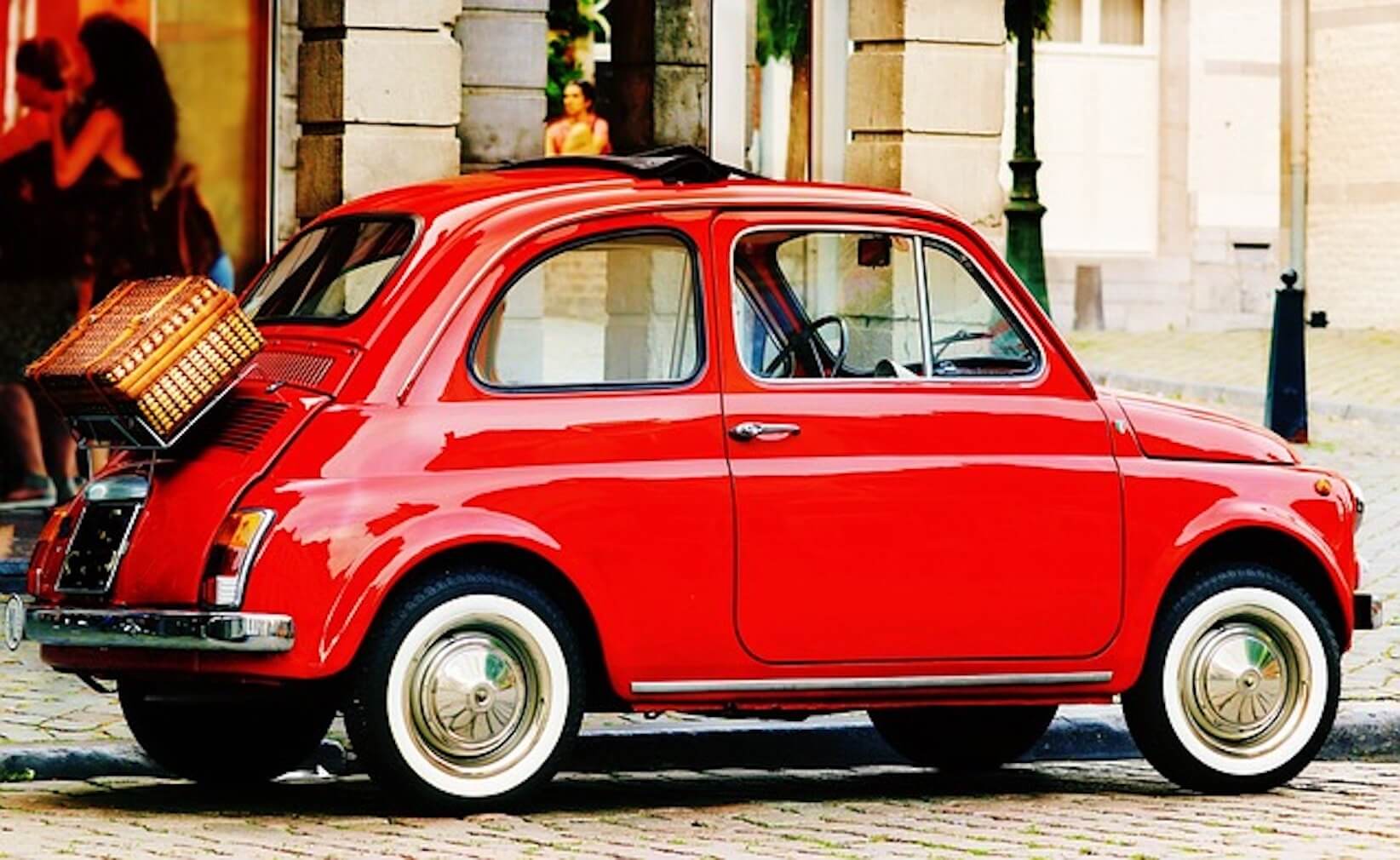
Insider Tip: Make sure to rent a small car!! Narrow streets and difficult parking.
Here are five places you can consider for a day trip from Palermo:
Monreale
�� � Located just a short drive from Palermo, Monreale is known for its stunning cathedral, the Duomo di Monreale. The cathedral is famous for its intricate mosaics, depicting biblical scenes and figures. The town also offers panoramic views of the Conca d�Oro (Golden Shell), the fertile valley surrounding Palermo.
Cefal�
This picturesque coastal town is about an hour�s drive from Palermo. Cefal� is famous for its medieval Norman Cathedral, beautiful beaches, and charming historic center. The town is nestled between the sea and a rocky promontory, offering a blend of cultural and natural attractions.
Segesta
�Known for its well-preserved ancient Greek ruins, Segesta is approximately an hour and a half away from Palermo. The ancient theater and Doric temple are among the main attractions. The site is set against a backdrop of rolling hills, providing a scenic setting for history enthusiasts.
Erice
Perched on a mountain about 2,460 feet above sea level, Erice offers breathtaking views of the surrounding landscape and the sea. The town is known for its well-preserved medieval architecture, including the Venus Castle and the medieval stone streets. You can reach Erice by cable car from the nearby town of Trapani.
Mondello
If you�re looking for a relaxing day by the sea, Mondello is an excellent choice. This beach resort is just a short drive from Palermo (12km) and is known for its golden sand and clear turquoise waters. In addition to sunbathing and swimming, Mondello offers a vibrant promenade with restaurants, cafes, and shops.
Souvenir Shopping

Shopping for local items is a great way to support responsible travel.
One of the tenants of responsible travel is supporting the local economy-translation�shopping. Traditional crafts and indigenous foods are a great way to focus on keeping dollars in the hands of the citizens who live there. In Palermo, local artisan makers are plentiful and delicious. See my upcoming post for a deeper dive into souvenirs from Palermo.
Conclusion: Unraveling the Secrets of Palermo
From the ancient Phoenician and Carthaginian settlements to the magnificent Arab-Norman legacy, Palermo stands as a testament to the merging of diverse cultures, each contributing to the city�s vibrant tapestry. Through the centuries, Palermo has been a melting pot of influences across all aspects of life, a unique blending of Greek, Roman, Byzantine, and Spanish traditions with the vibrant legacy of the Arab world.
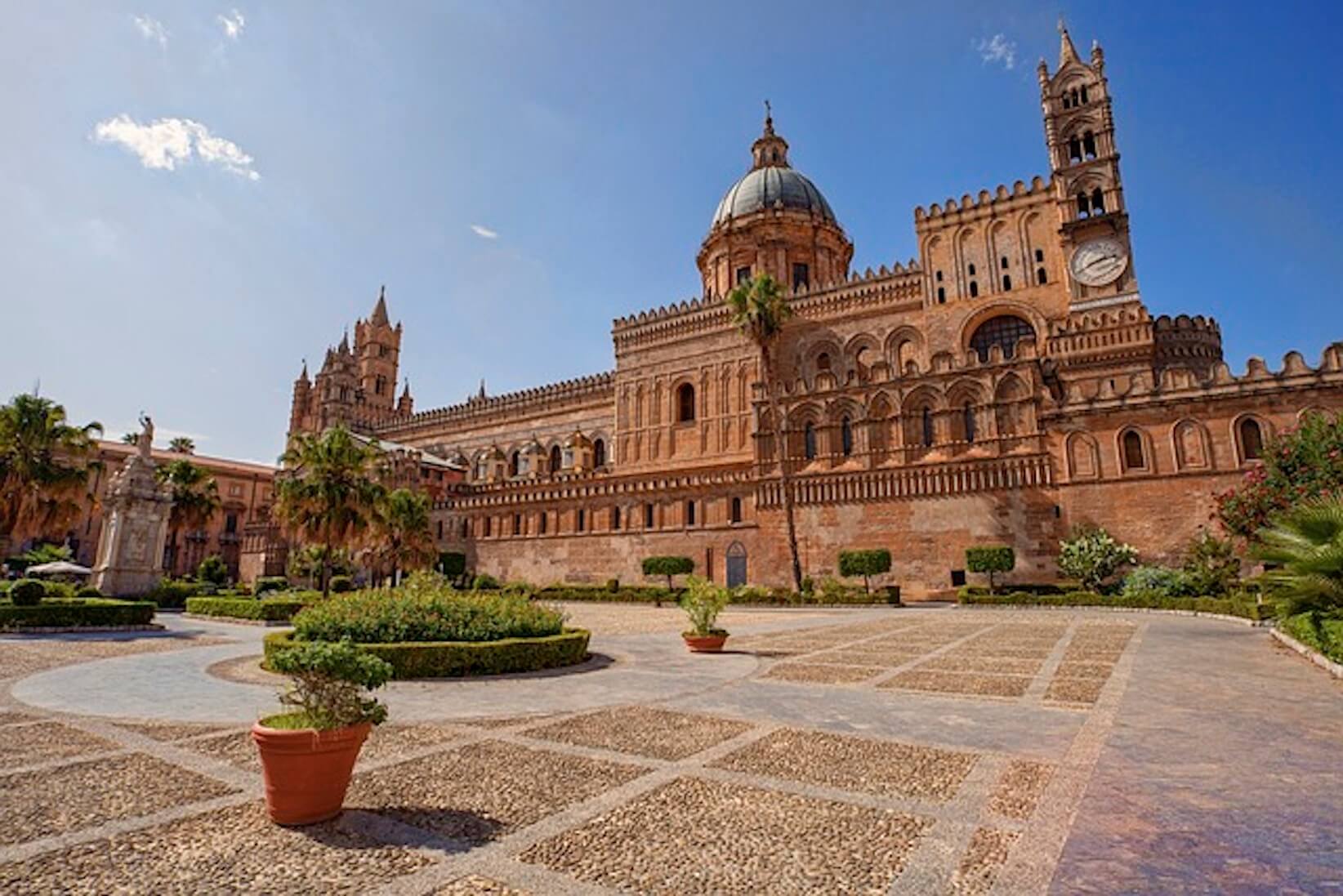
The majestic Palermo Cathedral.
In Palermo, the secrets of ancient history come alive. From the traces of forgotten eras in early ruins to the magnificence of architectural legacy, this city is a treasure trove of captivating stories. By immersing yourself in Palermo�s rich cultural heritage, you�ll embark on a journey through time.
When you visit, let the whispers of history guide your steps. The allure of this remarkable city will unveil its secrets. Remember, the past has much to teach us. Palermo�s history extends visitors the keys to unlocking a world of wonder. As philosopher Heraclitus once said, �Character is destiny,� and in Palermo, the character of a city shaped by centuries past just might influence your destiny as well.
Pin Me  �The Best Things to do Palermo Sicily
�The Best Things to do Palermo Sicily

The post The Best Guide for Things to do in Palermo Italy appeared first on Green With Renvy.





